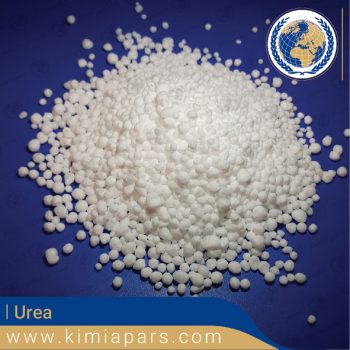Urea 46%
- Description
- Analysis of Urea 46%
Description
Granular Urea 46%
Chemical Formula of Urea: CH4N2O
Other names: Carbamide | Carbonyldiamide | Carbonyldiamine | Diaminomethanal | Diaminomethanone
Appearance: White solid
Usages:
- Pre-treatment for gluing wood material: moisture content reach to 10 + 2% , remove knots , cracks , oil stain and resin etc .
- 90% of industrial productions urea is destined for use as a nitrogen-release fertilizer
- Has the highest nitrogen content of all solid nitrogenous fertilizers in common use
- Has the lowest delivery cost per unit of nitrogen nutrient .
- All soil bacteria possess the enzyme urease which catalyzes conversion to ammonia or ammonium ion and bicarbonate ion in the soil .
- Urea is readily absorbed by plants for dominant sources of nitrogen for plan growth.
Packaging: 50 Kgs PP/PE with inner layer
Price: Negotiable, depending on the amount of the order
Min order: 1*20 ft. container
Delivery time: Within 5-10 days after we receive the payment
Origin: Iran
Urea is a colorless, crystalline substance that is highly soluble in water. It is an organic compound made up of carbon, nitrogen, hydrogen, and oxygen, and is widely used in the agricultural and industrial sectors. Urea is the most widely used nitrogen fertilizer and is known for its high nitrogen content, making it a popular choice among farmers. In this article, we will explore the history and use of urea, its properties, and its various applications in different industries.
The discovery of urea dates back to the early 19th century. In 1828, German chemist Friedrich Wöhler synthesized urea from inorganic materials, thereby establishing its organic nature. This discovery was a major milestone in the development of organic chemistry and challenged the prevailing belief that organic compounds could only be derived from living organisms.
Urea is synthesized from ammonia and carbon dioxide and is produced on an industrial scale through a process called the Haber-Bosch process. This process uses high pressure and temperature to convert ammonia and carbon dioxide into urea. The product is then cooled and dried to form solid urea crystals.
Urea is a highly effective fertilizer, and its popularity is due to its high nitrogen content, which is essential for plant growth. Urea provides plants with the nitrogen they need to produce chlorophyll, which is crucial for photosynthesis. Additionally, urea is a slow-release fertilizer, meaning that it releases nitrogen gradually over time, reducing the risk of nitrogen loss through leaching and volatilization.
In addition to its use as a fertilizer, urea has a number of other applications in the industrial sector. Urea is used as a raw material in the manufacture of melamine, a chemical used in the production of laminates, adhesives, and flame-retardant materials. It is also used in the production of urea-formaldehyde resins, which are used in the manufacture of molded products, such as kitchen countertops and bathroom fixtures.
Urea is also used in the production of pharmaceuticals, including diuretics and oral rehydration solutions. In the automotive industry, urea is used as a component in diesel emissions control systems, where it reacts with nitrogen oxides (NOx) to form nitrogen and water. This reaction helps to reduce the amount of NOx emissions from diesel engines, making them more environmentally friendly.
In the cosmetic and personal care industry, urea is used as an ingredient in skin care products due to its moisturizing properties. Urea is a natural component of the skin’s own moisturizing factor, and it helps to retain water in the skin, keeping it hydrated and soft.
Urea also has a number of other applications in the industrial sector. It is used as a component in the manufacture of adhesives, resins, and plastic materials. It is also used as a source of nitrogen in the synthesis of other chemicals, such as nitric acid and ammonium nitrate.
Usage of urea
Fertilizers: Urea is one of the most widely used nitrogen fertilizers in the world. It is a high-nitrogen fertilizer that is applied to crops to provide the necessary nutrients for growth and increase crop yields. Urea is also used in the production of controlled-release fertilizers, which release nitrogen into the soil slowly over time.
Plastics: Urea-formaldehyde resins are commonly used in the production of molded and laminated plastic products, such as kitchen countertops, electrical switchboards, and adhesives. The urea-formaldehyde resin is formed by the reaction of urea and formaldehyde, and it provides the final product with strength, stability, and durability.
Animal Feed: Urea is used as a source of nitrogen in the production of animal feed, including feed for poultry, cattle, and swine. Urea is added to animal feed to provide the necessary nutrients for growth and improve the quality of the feed.
Fuel Additives: Urea is used as a diesel exhaust fluid, which is added to diesel fuel to reduce emissions of nitrogen oxides, a harmful air pollutant. The urea reacts with the nitrogen oxides in the exhaust to form nitrogen and water, reducing the amount of harmful pollutants released into the atmosphere.
In conclusion, urea is a versatile and widely used industrial chemical that has a wide range of applications in the fertilizer, plastic, animal feed, and fuel additive industries. Its properties, including its high solubility in water and low melting point, make it a valuable component of modern industry, and its proper use and handling are important to ensure a safe and sustainable future.
UREA Analysis |
| Content | Test Result |
|---|---|
| Nitrogen Content | 46% Min Wt% |
| Mosture Content | Less Than 0.5 Wt% |
| Biuret Content | Less Than 1.00 Wt% |
| Formaldehyde | Less Than 0.55 Wt% |
| Size Distribution | >90 %WT (2 to 4 mm) |

